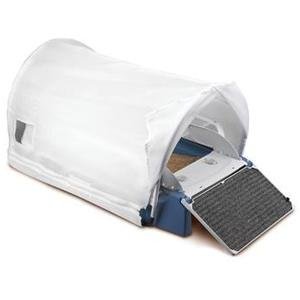Wet Winter Means Summer of Fleas and Ticks
This year's wet winter means pet owners should be prepared for a heavy dose of fleas and ticks this summer.  Consumers have many choices to help control pesky fleas and ticks. With it, however, comes a degree of uncertainty as to which is the best product or application to use.
Consumers have many choices to help control pesky fleas and ticks. With it, however, comes a degree of uncertainty as to which is the best product or application to use.
 Consumers have many choices to help control pesky fleas and ticks. With it, however, comes a degree of uncertainty as to which is the best product or application to use.
Consumers have many choices to help control pesky fleas and ticks. With it, however, comes a degree of uncertainty as to which is the best product or application to use. Bio Spot® Flea and Tick Control from Farnam Pet Products, the leading over-the-counter spot-on flea product, kills flea eggs and prevents them from developing into biting, breeding adults for up to four months. Bio Spot also kills and repels adult fleas, mosquitoes and ticks including Deer Ticks, which may transmit Lyme disease.
The fast-acting adulticide in Bio Spot erases 92 percent of adult fleas on your dog within 24 hours to bring fast relief, and goes on to kill and repel ticks and mosquitoes.
Specially formulated for the cat's more sensitive system, Bio Spot® Stripe-On Flea Control for Cats contains an IGR that wipes out flea eggs and larvae for up to four months. In addition, a flea-repellent towelette that kills fleas, ticks and mosquitoes is included for convenient use.
The best defense against fleas, ticks and mosquitoes is a combination of an insect growth regulator (IGR) and an adulticide. IGRs mimic a natural insect hormone, preventing normal flea metamorphosis. Flea eggs and larvae either die, molt into deformed adults that cannot feed or reproduce or never molt into adults.
The insect's life cycle is ended before it becomes a biting, breeding, egg-laying adult, which is important because more than 95 percent of the flea population is pre-adult. Adulticides kill adult fleas. Adult fleas have an outer shell that is nearly crushproof and covered with spikes, which helps them stick in fur. After about a day of feeding, the female flea begins laying eggs at a rate of up to 25 to 40 a day. With both an IGR and adulticide, the pet receives the best treatment, regardless of the flea stage.
For great flea control products visit GregRobert - http://www.grpet.com/
Labels: Flea and Tick



